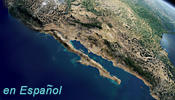![[OCEAN OASIS introduction]](../images/nav-ocean.gif)
![[Conservation]](../images/nav-conservation.gif)
![[History of conservation efforts in the Gulf of California]](images/navs-history4.gif)
![[Development of Biosphere Reserves]](images/navs-biosphere.gif)
![[Present status of the islands as protected areas]](images/navs-status.gif)
![[Northern Gulf]](images/navs-northern.gif)
![[Midriff Islands]](images/navs-midriff.gif)
![[Lower Gulf]](images/navs-lower.gif)
![[References]](images/navs-references.gif)
![[Map of protected areas]](images/navs-mapreserves.gif)
![[Links to Conservation Resources]](images/navs-links.gif)
![[Site Index]](../images/nav-index.gif)

See larger map of reserves, parks, and other protected areas.
|
Mexico's environmental legislation, the "Ley General del equilibrio Ecológico y la Protección al Ambiente" (DOF 1988, 1996) recognizes six categories of natural protected areas that can be established by the Federal Authority:
- biosphere reserves (reservas de la biosfera)
- national parks (parques nacionales, including both terrestrial and marine parks)
- natural monuments (monumentos naturales)
- areas for the protection of natural resources (áreas de protección de recursos naturales)
- areas for the protection of wildlife (áreas de protección de flora y fauna)
- natural sanctuaries (santuarios)
Because of the use of the same denomination of Biosphere Reserves for protected areas as defined by the Mexican Law and also for areas integrated within UNESCO's Man and the Biosphere Program (MAB) network of protected areas, some protected areas in Mexico are considered Biosphere Reserves under Mexican Law but not under MAB's international system, while other Reserves are recognized by MAB but do not have formal Biosphere Status under the Mexican legislation (see Gómez-Pompa and Dirzo 1995, and SEDUE 1989).
At present, UNESCO's Man and the Biosphere (MAB) Program has integrated twelve Mexican protected areas into its international network of Biosphere Reserves:
- Mapimí, located in the core of the Chihuahuan Desert (dedicated in 1976)
- La Michilía, in the temperate forests of the Western Sierra Madre in Durango (1976)
- Montes Azules, a large expanse of tropical rainforest in Chiapas (1978)
- El Cielo, in the slopes of the eatern Sierra Madre in Tamaulipas (1986)
- Sian Ka'an, in the coast of Quintana Roo (1986)
- Sierra de Manatlán, in the mountains of Xalisco and Colima (1988)
- Calakmul, in the Mayan forests of Campeche (1993)
- El Pinacate y Gran Desierto de Altar, in the core of the Sonoran Desert (1993)
- El Triunfo, a cloud forest in the Soconusco region of Chiapas (1993)
- El Vizcaíno, in the central part of Baja California (1993)
- Alto golfo de California y Delta del Río Colorado, in the upper Sea of Cortés (1995, also proposed as a RAMSAR site)
- Islas del golfo de California, the Islands of the Sea of Cortés (1995)
Of these twelve areas recognized internationally as Biosphere Reserves, two do not have a formal recognition as Biosphere Reserves under Mexican Federal Law: El Cielo is a State-decreed protected area in the Eastern Sierra Madre, in the State of Tamaulipas, and Islas del golfo de California was originally decreed as a reserve zone and refuge for wildlife and migratory birds, and is presently under study for its re-categorization, possibly into a Biosphere Reserve, or more than one.
On the other hand, the Mexican legislation also recognizes fifteen additional Biosphere Reserves, which are currently waiting for submission to the MAB program for formal recognition within the international network of MAB's Biosphere Reserves. These areas are:
- Archipiélago de Revillagigedo (Mexican Pacific Ocean)
- Arrecifes de Sian Ka'an (coast of Quintana Roo)
- Banco Chinchorro (coast of Quintana Roo)
- Chamela-Cuixmala (Xalisco)
- La Encrucijada (Chiapas)
- La Sepultura (Chiapas)
- Lacan-Tun (Quintana Roo)
- Los Tuxtlas (Veracruz)
- Mariposa Monarca (Michoacán and State of Mexico)
- Pantanos de Centla (Tabasco)
- Ría Lagartos (Yucatán)
- Sierra Gorda (Querétaro)
- Sierra de Abra Tanchipa (San Luis Potosí)
- Sierra de la Laguna (Baja California Sur)
- Tehuacán-Cuicatlán (Puebla and Oaxaca).
In spite of their still undefined status within the Mexican Environmental law, the islands are in practice managed as a Biosphere Reserve (Breceda et al. 1995, INE, 1994). In 1996 the administration of the natural protected area was divided into three regional headquarters:
- The southern islands are managed from an administrative office at La Paz.
- Tiburón and San Esteban are managed from an office in Guaymas.
- The western midriff islands area managed from headquarters in Bahia de Los Ángeles.
Continue to
Case Studies: The Northern Gulf
|
![[Ocean Oasis Conservation]](images/bnr-conservation.gif)

![[Ocean Oasis Conservation]](images/bnr-conservation.gif)

![[Present status of the islands as protected areas]](images/presentstatus.gif)